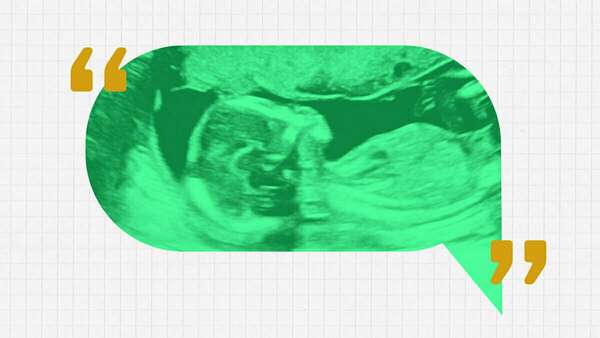World’s biggest polluters are least affected by environmental damage and conflict, new research warns

Study highlights urgent need for policy to address global inequality
The world's largest polluters are also the safest from the environmental damage they help create — while the countries least to blame face the greatest threats, including the increased possibility of violent conflict.
These findings, from a new study co-authored by a University of Notre Dame researcher, challenge conventional understandings of the relationship between conflict and the environment, highlighting inequalities that disproportionately harm countries in the Global South. The study was published in Communications Earth & Environment, a Nature series journal.
The new findings underscore the need to reimagine the conversation around the environment and conflict, with an eye to helping countries that contribute the least to climate change and yet suffer the most from resource extraction, environmental risks and conflict, said co-author Richard (Drew) Marcantonio, assistant professor of environment, peace and global affairs at the University’s Keough School of Global Affairs.
“Our study highlights the gap in current research evaluating the connection between ecological sustainability and peace,” Marcantonio said. “This is crucial for designing evidence-based policies that address global inequalities and support human dignity.”
The link between environmental risks and conflict is well documented, Marcantonio said: Conflict often leads to environmental deterioration and depletes resources; and environmental risks like climate change or resource scarcity can trigger or worsen conflicts by displacing people or creating competition over limited resources.
Overall, Marcantonio said, greater environmental risks are associated with higher levels of conflict, and social norms and institutions play an important role in this connection.
Previous research had suggested that the inverse might also be true — that high levels of ecological sustainability and peace were similarly correlated. But the new study found just the opposite, Marcantonio said.
A key difference in the new research lies in how it measures both sustainability and peace. Previous studies have used conventional measures of sustainability and peace, Marcantonio said, and these measures overestimate both characteristics in wealthier countries. But the new study used more holistic measures that account for total ecological footprint and participation in intrastate conflicts that harm other countries.
The result was a more thorough and accurate assessment that highlighted pressing global inequalities, Marcantonio said.

“In evaluating where peace is most prevalent, our results reaffirm the need to ask and answer the question of how to achieve a good life for all within planetary boundaries — or, in this case, comprehensively sustainable peace for all,” Marcantonio said. “And, although our results suggest that ecological sustainability and peace are not positively correlated, this relationship is not a necessary one. Ecologically sustainable peace is possible.”
Marcantonio, who is affiliated with the University’s Environmental Change Initiative, co-authored the study with Sean Field, an assistant professor in the School of Computing and Department of Anthropology at the University of Wyoming. The research was funded by the Kroc Institute for International Peace Studies, part of the Keough School.
The study’s findings suggest directions for additional work that can provide further evidence for effective peace and sustainability policies, Marcantonio said.
“Future research should focus on how comprehensively sustainable peace can be attained and sustained for all to enjoy without potentially externalizing conflict risks,” he said. “As rates of conflict and environmental risk continue to rise globally, exploring and determining how to effectively address this paradox is essential.”
Originally published by at keough.nd.edu on May 15.
Contact: Tracy DeStazio, Associate Director of Media Relations, tdestazi@nd.edu; 269-769-8804
Latest ND NewsWire
- Sports program promotes health and wellness, offers life lessons to Robinson Center youthAs part of its annual Summer Scholars & Day Camp program, the Notre Dame Robinson Community Learning Center is using sports to promote health and wellness and offer life lessons to area youth.
- Twenty-two Notre Dame students selected for 2025-26 Fulbright U.S. Student ProgramTwenty-two University of Notre Dame students have been named finalists for the 2025-26 Fulbright U.S. Student Program, with another seven singled out as alternates for the award. The finalists include 18 undergraduate students and four graduate students.
- Women of African ancestry may be biologically predisposed to early onset or aggressive breast cancersResearch from the University of Notre Dame is shedding light on why Black women are likely to have early-onset or more aggressive subtypes of breast cancer. The study published in iScience found that a population of cells in breast tissues, dubbed PZP cells, send cues that prompt behavioral changes that could promote breast cancer growth.
- First impressions count: How babies are talked about during ultrasounds impacts parent perceptions, caregiving relationshipPsychologist Kaylin Hill studied the impact of a parent’s first impression of their baby during an ultrasound exam. The words used by the medical professional to describe the baby (positive or negative) influence how the parents perceive their baby, relate to them after they're born and even how that child behaves as a toddler. The research has broad implications for how we train medical professionals to interact with expectant parents, as well as how we care for parents during the perinatal period when they are most susceptible to depression.
- Researchers at Notre Dame detect ‘forever chemicals’ in reusable feminine hygiene productsWhen a reporter with the Sierra Club magazine asked Graham Peaslee, a physicist at the University of Notre Dame, to test several different samples of unused menstrual underwear for per- and polyfluoroalkyl substances (PFAS) in 2019, the results fueled concern over chemical exposure in feminine hygiene products — which ultimately ended up in a $5 million lawsuit against the period and incontinence underwear brand Thinx. Then in 2023, the New York Times asked Peaslee to test 44 additional period and incontinence products for PFAS, a class of toxic fluorinated compounds inherently repellent to oil, water, soil and stains, and known as “forever chemicals” for their exceptionally strong chemical and thermal stability. Measurable PFAS were found in some layers of many of the products tested — some low enough to suggest the chemicals may have transferred off packaging materials, while others contained higher concentrations, suggesting the chemicals were intentionally used during the manufacturing process. In the meantime, another group of researchers published a study that found PFAS in single-use period products, leading Peaslee and his lab to widen their investigation into all sorts of reusable feminine hygiene products — often viewed as an eco-friendly option by consumers. Now, the results of that study have been published in Environmental Science & Technology Letters.
- Smarter tools for policymakers: Notre Dame researchers target urban carbon emissions, building by buildingCarbon emissions continue to increase at record levels, fueling climate instability and worsening air quality conditions for billions in cities worldwide. Yet despite global commitments to carbon neutrality, urban policymakers still struggle to implement effective mitigation strategies at the city scale. Now, researchers at Notre Dame’s School of Architecture, the College of Engineering and the Lucy Family Institute for Data & Society are working to reduce carbon emissions through advanced simulations and a novel artificial intelligence-driven tool, EcoSphere.













